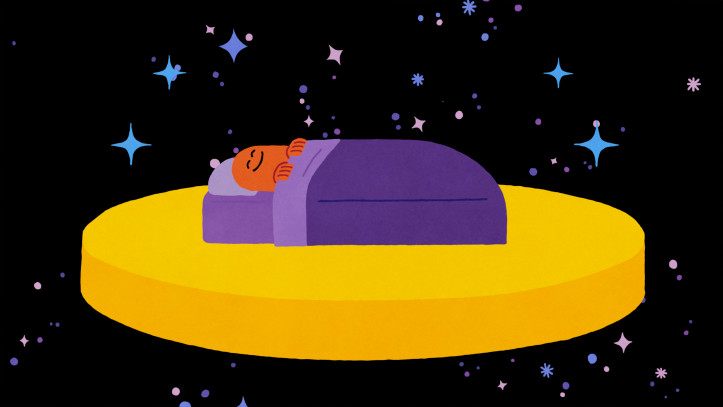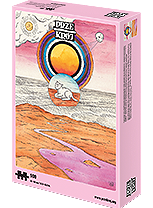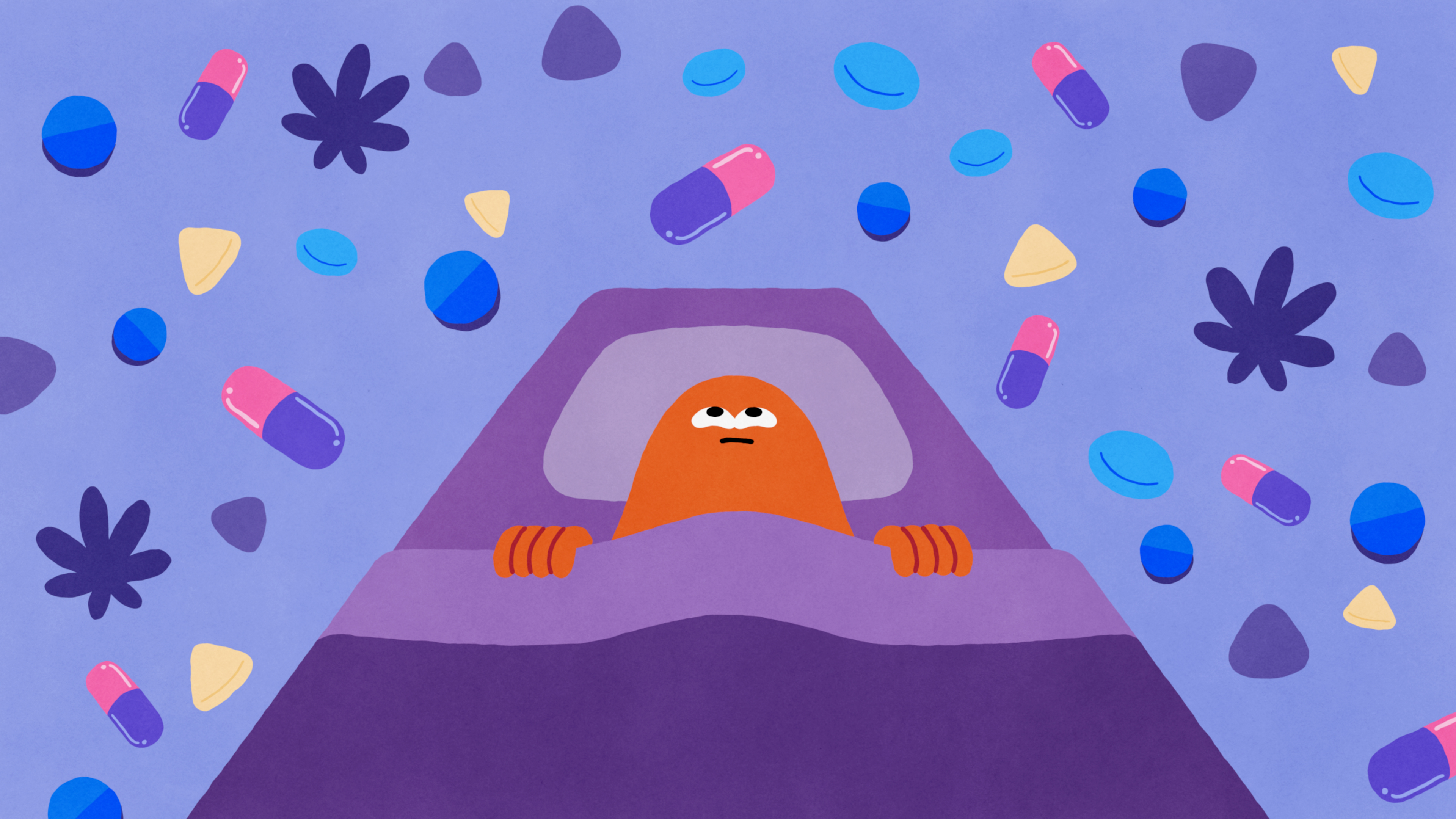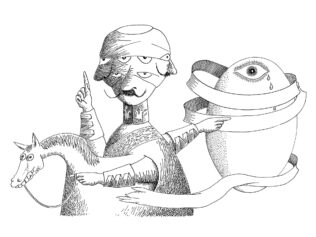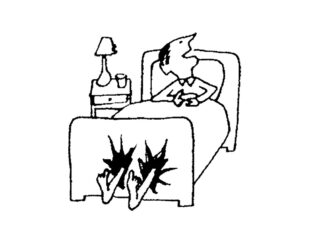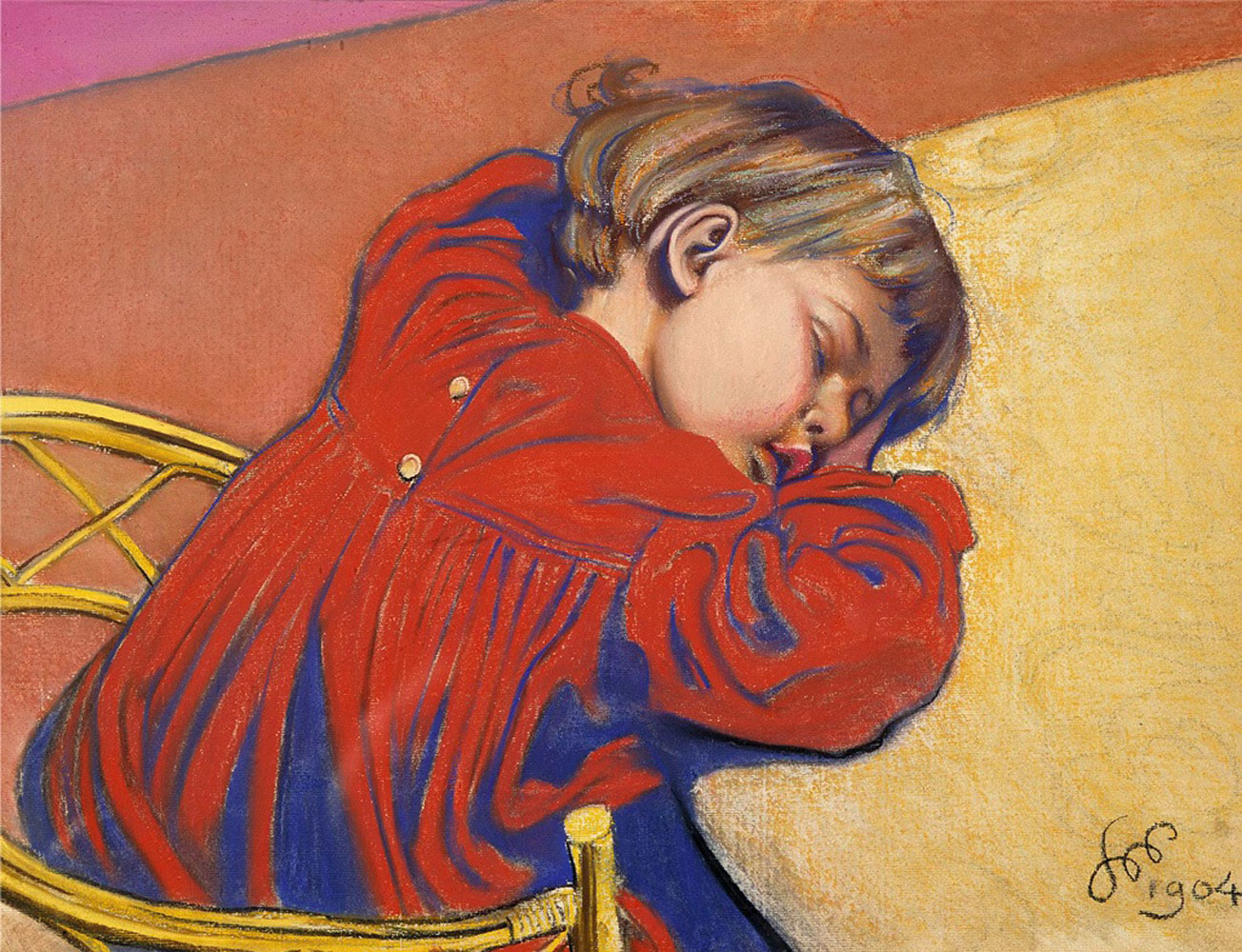
How can meditation and mindfulness help us to build healthy habits for a more restful night? Headspace’s latest offering on Netflix is an animated documentary narrated by Eve Lewis Prieto, whose calm and friendly voice navigates viewers through the world of sleep. Eve talked to Dariusz Kuźma about different aspects of the series, as well as the value of reinventing our sleeping patterns to meet the needs of our bodies and minds.
Dariusz Kuźma: In Headspace Guide to Sleep you acknowledge that what makes a good night’s sleep differs from person to person. Are there any common misconceptions on the matter?
Eve Lewis Prieto: Plenty. Something I found really interesting doing this show is that I’ve always believed you had to have eight hours of sleep in order to have a restful night. For so many years, I was feeling I was failing at sleep because of that, but it’s actually a bit more complicated. Sure, eight hours is great and six hours probably insufficient, no doubt about that, but you have to realize that sleeping too much is not good either. The sweet spot is around seven to nine hours, although it’s going to change over our lifetime and is always an individual thing. It’s the quality and balance that really matter, not necessarily the quantity. That’s why in the show we promote healthy habits around what makes a restful night’s sleep. Where meditation and mindfulness come in is in helping to put a little bit of space between us and our thoughts, in bringing awareness to not only what we do before we go to sleep but also during the day. So that when we go to sleep, the mind and the body are ready to rest.
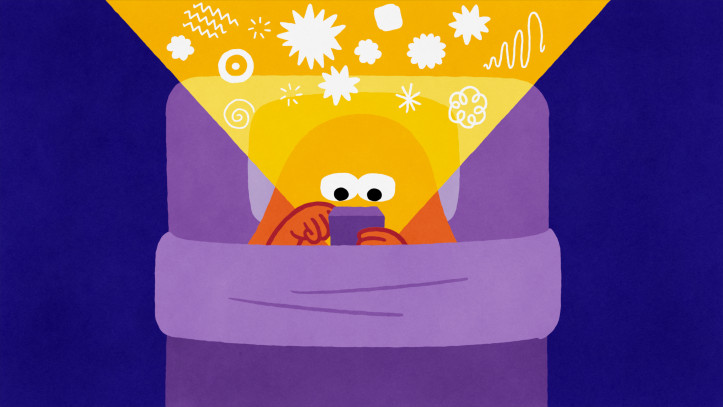
What you do during the day influences the quality of your night’s sleep?
Oh, very much. We focus a lot in the show on how practising meditation during the day is one of the most effective ways to take control of or at least balance your sleeping pattern. I know that the concept that what you do in the morning influences your night’s sleep can be a little surprising, but that’s not an overstated approach. Before I tried meditation, I used to wake up in the night with feelings of stress and anxiety. Because stress is really good at keeping us awake, it’s designed to keep us in a state of vigilance and protect from what we consciously or subconsciously feel may hurt us. So if we’re able to bring more awareness to how we’re feeling and responding to situations during the day, we’re more likely to know when we’re ready for bed, and we’re able to change our relationship to those challenging situations that happened in the day and keep us awake at night.
Throughout the series, you mention interesting methods designed to change our relationship with sleep, like the dream incubation technique that may both enhance the problem-solving process and help a person to deal with recurring nightmares.
I have to say that the episode on dreams is my favourite. I’m a big dreamer myself and I can assure you these techniques are a great way to know yourself a bit better. The one you mentioned was created by a psychologist who asked her students to select a problem that they wanted to solve. It could have been anything, even an unsolved homework assignment. Then she asked them to write it down on a piece of paper and put it next to their beds. Before going to sleep, they had to focus their attention on the problem and visualize some image associated to it. Interestingly, after seven nights of repeating this exercise, half of them were actually able to recall a dream related to the problem, which led them to a solution that they were subconsciously aware of. A nice learning technique, though I wouldn’t recommend grounding your decision-making process solely in your dreams. And when it came to people experiencing nightmares, they were able to rewrite the story from their nightmare by repeatedly visualizing a different scenario during the day. Safer, happier, etc. When it came to bedtime, they were able to bring that changed storyline to life and navigate away from the bad dream.
This is just one of many examples of how meditation and mindfulness can help us to live a fuller life, but are meditation and mindfulness for everyone? There are people unable to have such control over their bodies and emotions, as well as others who would not be able to imagine mentally switching off different muscles of their bodies during a wind-down exercise.
That’s a really great question, but one that is impossible to answer because everyone will approach meditation and mindfulness differently. The current Netflix series, as well as other Headspace initiatives, aims to offer people a multitude of tools to use and show some ways of how to use them. You’re right, some people may not feel like doing wind-down exercises, so hopefully we’ve presented alternative options they can try. A lot of the show is focused on providing healthy routines around sleep, and for some people that might simply be reinventing their relationship with the devices they use on a daily basis. Technology is not bad, it’s how we use it that can be problematic. For other people, trying consistent wake-up hours may be the best solution to regulate their sleep.
What about parents of young children?
Ah, I wish I had an answer to that! With young children, there’s obviously going to be a lot of sleep disruption. There will be nights where sleep is just not going to happen. But this doesn’t mean you cannot try to bring some awareness and compassion into parenthood. I mean, why not experience mindfulness together? The series isn’t just a solo thing to watch, we encourage families to do the exercises, the breathing routines, the wind-downs, etc. In fact, we know from parents who try them with young children that they are effective. Headspace Guide to Sleep offers some ideas, but there are more in our app. Another aspect is that the series has a lot of great animated content that children respond to. Make children a part of it, even the youngest ones, and you might be surprised with the result.
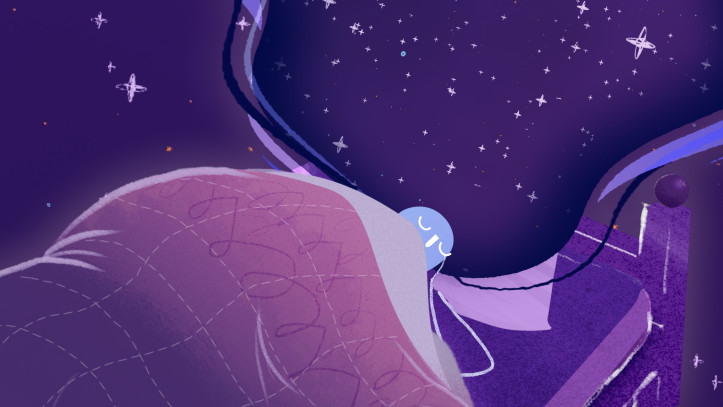
The abstract, surreal, yet calming animation seems to take a hint from Marshall McLuhan’s theory that the medium is the message. Was the Headspace Guide to… series always to look this way?
Animation has been a huge part of Headspace since its beginnings over 10 years ago, because we believe it allows for a much deeper visual experience. In the case of Headspace Guide to Sleep, it also creates a visual story to accompany a lot of science, and supports the audio experience. We’re talking about the human mind, which is this abstract, intangible thing, thus visualizing some of the concepts can be both meaningful and comforting. Another pervading myth about mindfulness and meditation is that during meditation you have to clear your mind of all thoughts. Actually, you do the opposite, you bring awareness to how the body and mind are in this particular moment – and with it, kindness and compassion. You’re learning how to be at ease with your mind. How to understand it, not shut it down.
How often should you practise some of the things you mention in the series?
It’s a question I get asked quite often. What is important is to understand the difference between meditation and mindfulness. You see, meditation is the practice part where you intentionally spare a part of your day to train your mind in awareness and compassion. Mindfulness is the overall concept of being aware of our moment-to-moment experiences and using it to your benefit. We can actually practise mindfulness at any point of the day just by trying to be focused on what we’re doing. But, as we all know, it’s not that easy to be present and connected to one’s mind and body, so meditation is one of the best ways to train mindfulness. The key is not how long you practice but how regular you are. I always say to beginners: do what works for you, for your schedule, for your life circumstances, and start small. If every day is impossible, try finding time two or three times a week. Even if just for five to 10 minutes each day. It’s a start. When you establish an individual routine, you can increase the commitment. There’s no right or wrong way to do this.
Some people take pills to deal with sleeping problems. You devote one of the episodes to discussing this issue and list some alternatives, like listening to music.
A lot of the reasons for why people potentially reach for things like sleeping pills or herbal remedies is because they kind of want a quick fix. That’s understandable, especially if you’re not getting sleep on a regular basis. You should at least try to look for different solutions. Meditation is one of them, trying to be more aware of the things that make you agitated and reacting by putting some space between the work day and bedtime. It could be a wind-down ritual one hour before going to sleep and banning yourself from looking at any screens after that. It could be listening to relaxing music, reading a book, or – one of my personal favourites – having a bubble bath once in a while. Or just a warm shower that can induce that sleepy feeling. Again, it’s all individual, but being aware of the alternatives means being more prepared.
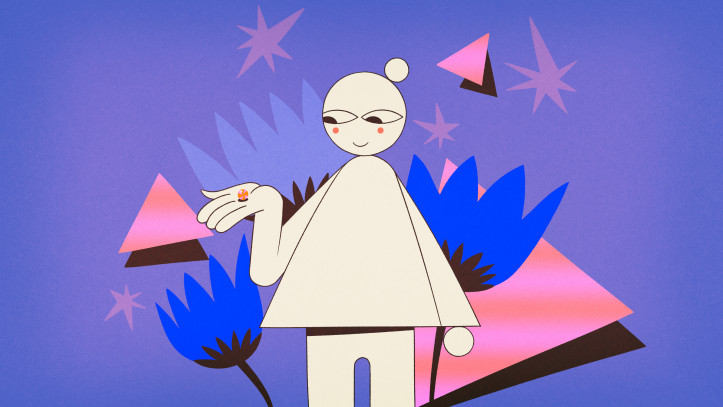
In the series, you mention a study saying that if you regularly sleep poorly you are more prone to life-threatening diseases. Is there a point of no return, so to say?
I don’t think so. I believe every situation is workable. If there are health issues, you definitely should discuss them with your doctor. Meditation and mindfulness can’t answer everything and we would never try to interfere with any medication or treatment. But we’ve had many messages and emails from people from all over the world dealing with a multitude of illnesses who have told us being more mindful and present helped them with pain management, or simply helped when they felt life is much harder than it’s ever been before. Our mission at Headspace is to improve the health and the happiness of the world, and we use a plethora of tools and services to do so.
So the takeaway is that once you get into it, you should experiment with different methods and approaches and find the best one for you?
Absolutely. Sleep is one of the most human things there is, but we tend to know very little about how to make it work for our benefit. I had to experiment a lot around my sleeping habits and it’s taken a bit of time to find what works for me. Everyone is different, has a different relationship with the world. But if you take one thing away from the show, I think we’ve done our job. It isn’t that meditation and mindfulness is the only way. It’s just it’s our way. We try to present it through looking at the full spectrum of what constitutes a healthy sleeping pattern or a restful night. There’s quite an amount of information in the show, but it’s also an immersive experience you can try out. If you don’t like it, you can always try something different. What’s most important is to try.
Parts of this interview have been edited and condensed for clarity and brevity.
